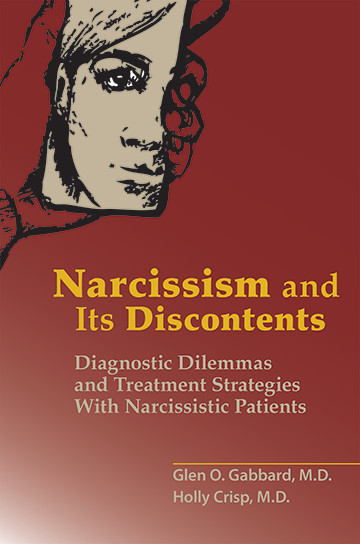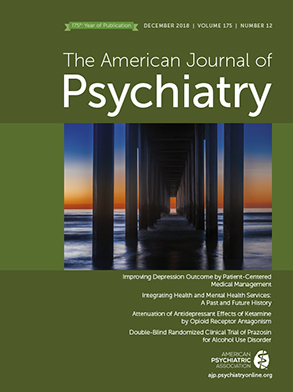This book is remarkable. I found myself saying “wow” as I soaked in the wise words of each page. The information is weaved together like a symphony, bringing together a wide array of fields, including attachment theory, psychodynamic paradigms, and current research, to bring us to the forefront of knowledge regarding the concept of narcissism. I recall my experience long ago in residency, struggling to understand exactly what “narcissism” meant, the “underbelly of narcissism” that we would discuss, the different ideas and conflicting views of the concept, ... and finally, here it is: the answer to the questions I think most of us have had for decades. Gabbard and Crisp have provided a true gift through the synthesis of the “multiple-headed hydra” of narcissism, its reflection in our current culture, and a glimpse at how masters approach patients with these defenses and deficits.
Gabbard and Crisp begin by sharing the general idea of narcissism and its many presentations. They differentiate the self-states and presentations of the grandiose or oblivious narcissist and the vulnerable or hypervigilant narcissist, and these are contrasted with the idea of healthy narcissism. The authors further delineate the condition by degree of pathology and suffering, from mild narcissistic disturbances to psychopathy. Owing to lack of research and clarity of definitions, the DSM-5 committee nearly eliminated the diagnosis. This almost happened despite the fact that more than 25% of patients in psychotherapy carry features of the condition. Unlike other diagnoses, including borderline personality disorder, it is difficult to share the diagnosis with patients despite growing expectations to do so.
The discussion of attachment and the developmental roots of narcissism is quite valuable. The authors provide an informative model of the attachment paradigm, describing Ainsworth’s strange situation, later understanding of adult attachment, and an outline of the ideas of mentalization and self-reflective capacity. They bring us up to speed with how these ideas might relate to the development of personality and walk us through what is known in the literature about the contribution of parenting and the development of personality disorders. They conclude with Brennan’s study that participant memories of both cold and aloof parenting, as well as the overvaluation of children, contribute to the development of narcissism, supporting Kernberg’s notion that “fostering the development of a pathological grandiose self are parents who are cold and rejecting, yet admiring” (p. 44).
The authors share with us the different forms of relating that are familiar to most seasoned therapists and how these relate to the presentation of patients and potential treatment strategies. They compare different theorists in this process, particularly Kohut’s ideas of the use of empathy and interpretations of environmental failures, with Kernberg’s active stance to identify and confront negative affect, including envy, anxiety, and aggression. They describe why these patients present to therapy, as well as predictable patterns of interactions with their therapists. These include such interactions as the treatment of the therapist as a “satellite” observer there for receipt of a monologue, the competitive nature of interactions often experienced by the more grandiose, and the fragility of the vulnerable narcissistic patient in the face of any interpretation.
The section on the understanding of transference and countertransference was particularly helpful in understanding the unfolding of treatment. The evidence base presented on the use of transference-based interpretations is thorough, informing the reader that this might be most helpful for patients with a measured lower quality of object relatedness. The authors underscore the importance of working with patients along the supportive to the interpretive continuum, being flexible with this stance and shifting toward what appears most helpful while tailoring the treatment to the responses of our patients. For me, this book reached a true crescendo at this point—weaving together, among others, Fairbairn’s theory of object relatedness and Benjamin’s ideas of intersubjectivity. This done all on the backbone of a case of Ms. I and Dr. J and her response to his wandering mind and associated eye aversion. The authors underscore the importance of seeing our patients as subjects like ourselves, particularly amid disruptions, and the need for all of us to embrace our aliveness with an ability to improvise through moments of therapy, citing Philip Ringstrom’s ideas.
This book consolidates knowledge from a vast array of sources and will make the reader feel not only smarter but more confident as a psychotherapist. It is reassuring and compassionate and reflects what we all face in the consulting room. We have now integrated this as a critical text to read with our psychiatry residents during their outpatient third year of training and know that they will appreciate receiving what I was looking for 30 years ago.


